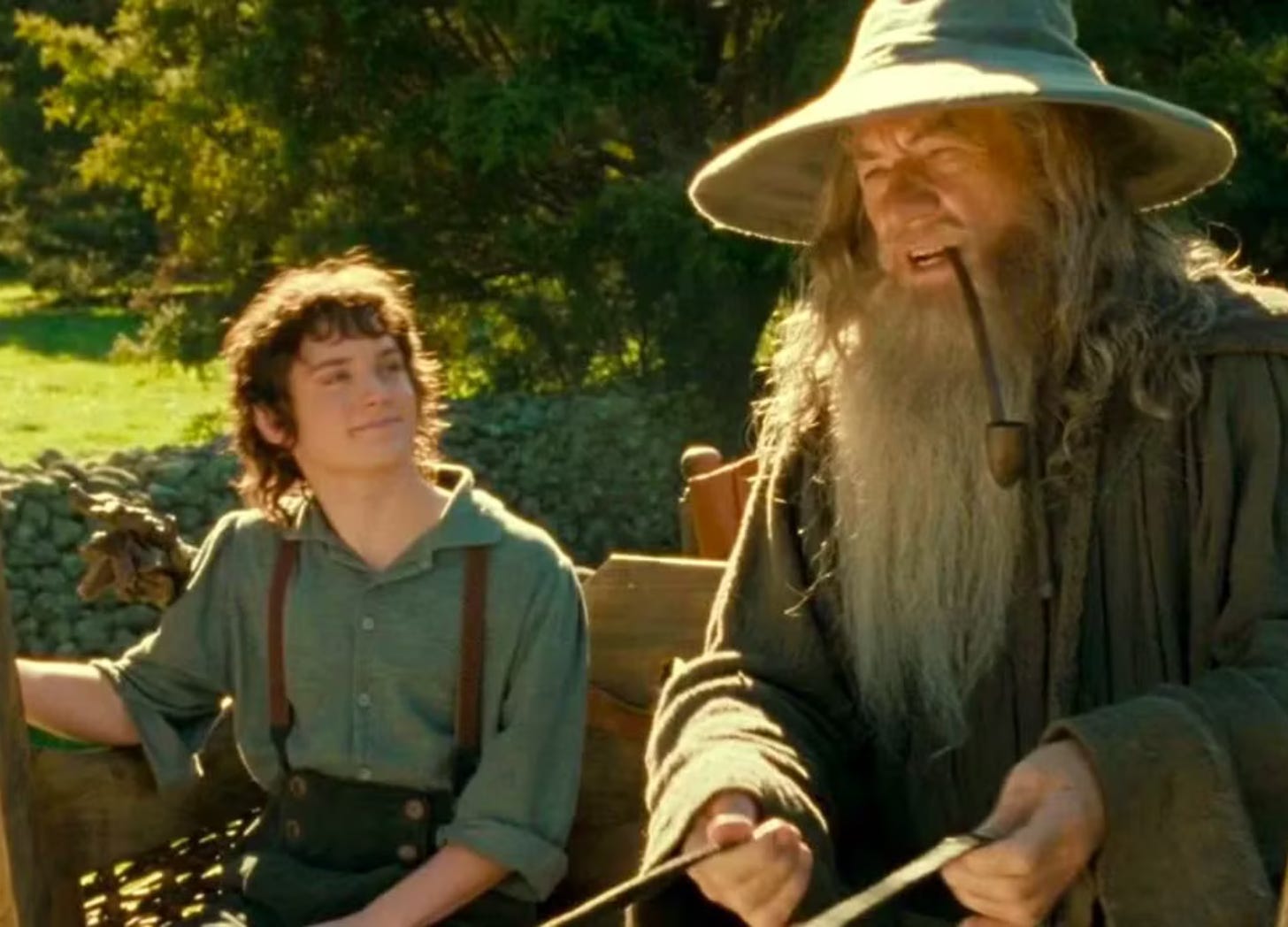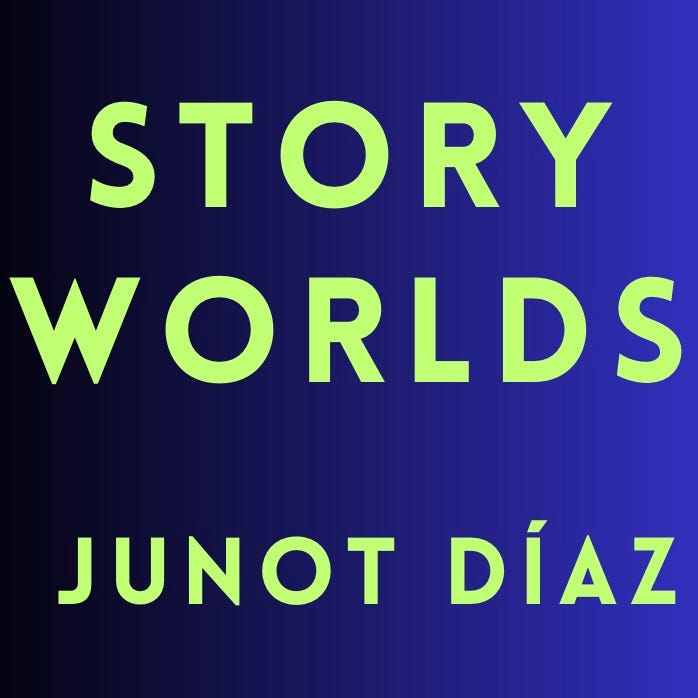If you’re new here, read this quick primer on the Story Energies, a new way to talk about storytelling.
In my last post on harnessing Gravitational Energy, I offered advice on how to develop and enhance your story worlds by considering the Mysteries and the Manners at play. If you’ve spent the week trying to apply this advice—and completing the helpful two-step exercise A World Apart—then you hopefully now have a richer knowledge of the world of your story, and all the ways it’s different from everywhere else. And you have a clearer understanding of the various forces it can exert upon your characters.
So what’s the next step?
The awesome Junot Díaz, on his wondrous Storyworlds Substack, has over the past few weeks been running a series on the Fundamentals of Setting, where he talks about the Demands a setting can make on a story’s characters. Story settings, he reminds us, are social worlds, that exert social pressures on their members. And he evokes Foucault to tell us: “This conformative ‘gravity’ is an inescapable fact of how the world works, one that everyone struggles with to one degree or another.” (We can compare this to Flannery O’Connor’s idea of Manners in fiction.) He then adds a useful next step:
When constructing a Story’s Setting the writer must always consider what that Setting wants from the Protagonists.
If Characters have Wants, Settings should have Wants too.
Characters have Wants for themselves and Settings have Wants for their characters.
Further installations of the series develop this idea that settings should place specific Demands upon their characters. He recommends jotting down—and updating, if necessary—a working list of a story’s potential Demands, and notes that they can be rendered through exposition and dramatisation.
And while one Demand helps, two Demands—or a Demand Duo, of two conflicting or contradictory Demands—is even better. He offers some classic examples:
Settings that afflict their Protagonist with that most familiar of antagonistic Demand Duos: Make Money and Be Devoted to Family — Demands that are rarely easily reconciled. Then there’s the Adolescent staple: Follow Your Dreams and Be Practical and Conform to the Rationalizing Hammer of Capital. Or the capitalist hustle Demand Duo: Work Hard and Honest in a Criminal System or Commit Crime because of a Dishonest Criminal System. How about the Demand Duo from Star Wars that’s almost a default in YA literature: Be Loyal to Family and Fight Evil Empire.
To return to our Story Energies, if we have a clear idea of what these Demands are, we can then use them to help generate other forms of Story Energy.
We can add Potential Energy to our characters, by having them embody or represent in some way a setting’s Demand.
Demands can help complicate the bonds between our characters, to generate Magnetic Energy—and then, when things kick off and get atmospheric and emotional, Electrical Energy too.
And they can present obstacles that our characters have to overcome, and so generate movement (Kinetic Energy) and tension (Elastic Energy).
And hopefully, with all those Energies combined, generate so much heat (Thermal Energy) our readers are billowed by their overwhelming sense of awe.
Or, at least, keep turning our pages.
One of the most interesting points Díaz makes in this series is that, while a story can have more than two of these Demands, he always aims for just one Duo—“Two Demands, unequal, in opposition to one another are difficult enough to finesse.”
When we work hard to pack our story worlds with vivid specificity and rich complexity, the possibilities for the story itself can seem endless. This presents us with all sorts of opportunities—roads down which we can guide our stories—but it can also create a paralysing challenge—how do we decide which of these roads to take? Focusing on one Demand Duo—in Díaz’s own fiction, that’s Be Dominican and Don’t Be Dominican, and for Frodo Baggins in the Shire, he tells us, it’s Be a Decent Respectable parochial Hobbit and Be Aware that the Shire is part of an apocalyptic multi-racial conflict zone called Middle-Earth—can help us decide what our story is really about, and add a clarity and cohesiveness to what we might call our creative vision.

Also interesting is Díaz’s note that these two Demands should be unequal—that one should have a stronger pull on a protagonist than the other. I assume that this gap exists so that the protagonist can, in one way or another, and thanks to their own considerable talents and effort, overcome the odds to score a remarkable victory.
Or, at least, achieve some sort of balance.
Like all forms of Story Energy, it can be helpful to consider Gravitational Energy during each stage of the writing process.
Generate:
When you’re brainstorming a new idea, or embarking into the early stages of a story, thinking about the Mysteries and Manners of your story world can help you learn new things about this universe you are imagining into being. At this point, it might be wise to make a list of potential Demands your setting might make of your characters, but keep an open mind about which two you will end up focusing on.
Develop:
When you reach the end of a first draft, or get stuck, take some time to develop your understanding of the setting (its Mysteries and its Manners), and see what further possibilities it can offer your story. And by now you might want to narrow (/reconsider) your list of your setting’s Demands, and see if there is a Demand Duo (conflicting, unequal) that seems right to you.
Refine:
When you have a draft you’re pretty happy with, try to forget everything you had in mind for the story, and read it with fresh eyes. Make a new list of the Demands that are present in your draft. And try settling on one Demand Duo, and refining your story so that each of those plays a prominent role in your final draft. And as these Demands tend to be necessarily abstract (like Follow Your Dreams or Be Loyal to Family), return again to the world’s Mysteries and Manners to find more nuanced, more concrete ways in which these Demands can exert themselves upon your characters, and your story.
To discover and explore everything this new approach has to offer, sign up for 60 days of free, full access to all Story Energies content as we get up and running.
Thank you to Junot Díaz for sharing his thoughts on his Substack. For more practical, erudite advice, you can (if you’re not already a subscriber) sign up here:










